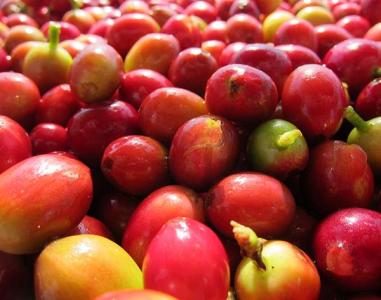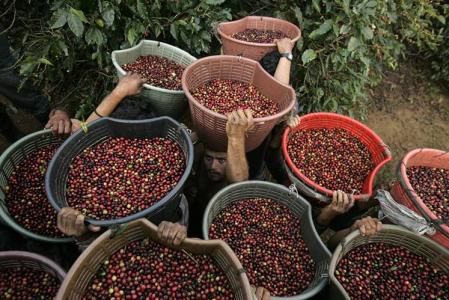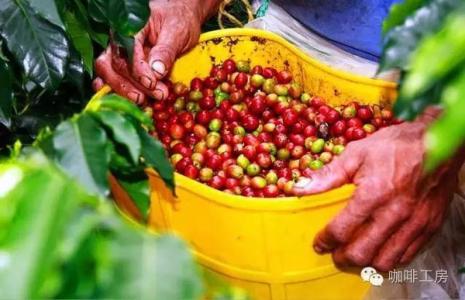The spread and Development of Coffee in China the Exchange of Coffee Culture in China
The spread and Development of Coffee in China the Exchange of Coffee Culture in China
After coffee became a popular drink in the southern Arabian Peninsula, it was brought home by Islamists who made a pilgrimage to Mecca, where it began to spread rapidly in Arab countries and landed in Turkey and Persia one after another.
The widespread acceptance of coffee will inevitably lead to the birth of cafes. It is said that the earliest cafes came into being for religious reasons, but they soon evolved into places for people to draw and chat, a tradition that continues to this day.
The history of coffee introduced into China is not long, and it was not until 1884 that coffee was first planted in Taiwan. In the mainland, the earliest coffee cultivation began in Yunnan. At the beginning of the 20th century, French missionaries brought the first batch of coffee saplings to Binchuan County, Yunnan Province, and coffee has been grown on the mainland ever since.
The great potential of China's coffee market can not be ignored. Some internationally renowned coffee companies have chosen Shanghai as their production base and adopted a long-term strategy to expand the Chinese market. At the same time, China is also actively cultivating its own coffee planting base. Yunnan Province in China is very close to the coffee growing areas of Colombia, in which Simao, Lincang, Dehong, Baoshan and other areas have begun to develop coffee planting industry, and the quality of small-grain coffee has been fully affirmed by international coffee organizations. Industry insiders predict that in the near future, these regions will fill the gap in China in the world coffee planting map.
"Coffee" and "instant coffee" are two interchangeable terms. Until the entry of Starbucks in the United States and teahouses in Hong Kong, people began to realize that coffee was not instant coffee, but something else. What is it? It is a stylish, Starbucks abstract painting, jazz and aggressive coffee aroma, and a half-tea and half-coffee drink in a teahouse such as "Yuanyang". Served in exquisite white porcelain plates, it is served with dishes by the waiter. The former, because it is more exotic and fashionable, has become another noun for coffee after "instant coffee". Most of the signs of "coffee and language tea" appear in cafes opened by Taiwanese or Singaporeans, which originally means that they drink coffee but are full of a casual "tea attitude". The atmosphere and feeling are still the social performances of the old teahouse.

Important Notice :
前街咖啡 FrontStreet Coffee has moved to new addredd:
FrontStreet Coffee Address: 315,Donghua East Road,GuangZhou
Tel:020 38364473
- Prev

What is the type of fruit flavor of coffee? describe the taste treatment method of producing area.
What is the type of coffee fruit flavor description the height of the coffee garden in the law-producing area is controlled at about 2 meters, and most of the Arabica tree species are planted at high altitude. most of the fruits in high altitude areas are not conducive to mechanical harvesting, and most of them are picked manually. At present, the main picking methods in the world are mechanical harvesting and manual picking of coffee beans.
- Next

Coffee bean grinding can choose the fineness of the grade how to drink after grinding
Coffee bean grinding can choose the fineness level how to drink the double-gear grinder after grinding is to adjust each other's height to set the coffee powder thickness, do not underestimate this kind of grinding machine, its structure is incomparably precise, without the double-gear grinding machine, it is impossible to brew thick, authentic espresso at the best time to grind it before cooking. Because it is ground into powder
Related
- What brand of black coffee is the most authentic and delicious? what are the characteristics of the flavor of the authentic Rose Summer Black Coffee?
- Introduction to the principle and characteristics of the correct use of mocha pot A detailed course of mocha pot brewing coffee is described in five steps.
- Which is better, decaf or regular coffee? how is decaf made?
- How much is a bag of four cat coffee?
- How about four Cat Coffee or Nestle Coffee? why is it a cheap scam?
- Which is better, Yunnan four Cats Coffee or Nestle Coffee? How about cat coffee? is it a fake scam? why is it so cheap?
- How about Cat Coffee? what grade is a hoax? which instant coffee tastes better, four Cat Coffee, Nestle Coffee or G7 coffee?
- Process flow chart of coffee making-Starbucks coffee making process what coffee tastes good at Starbucks
- The top ten best coffee beans in the world Rose summer coffee or Tanzanian coffee tastes good
- Yunnan four cat coffee is good to drink?_four cat coffee is a big brand? four cat blue mountain coffee is fake?

